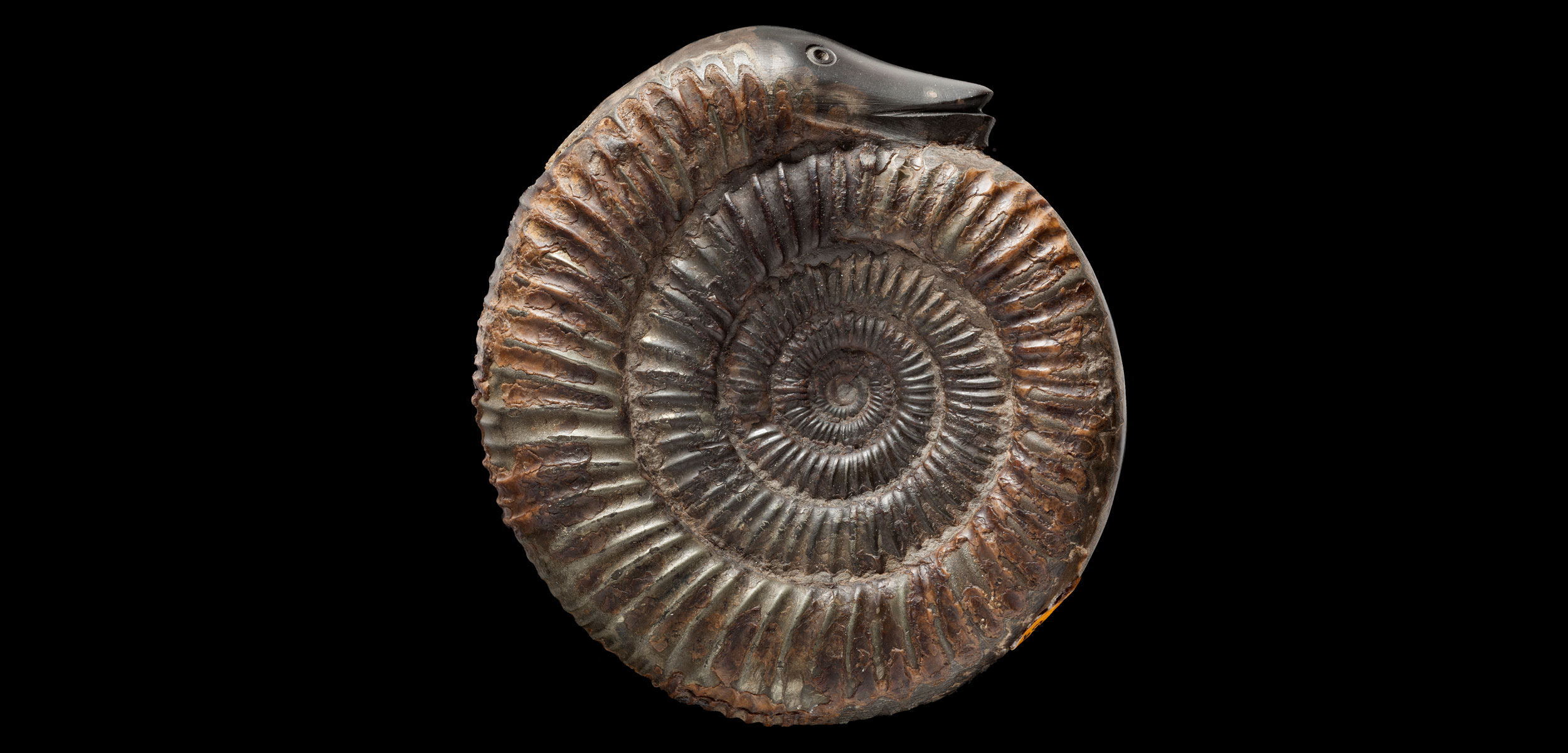A Legend of Snakes and Stones
St. Hilda was said to have decapitated snakes and turned them into stones—years later, artisans gave the “snakes” their heads back.
Article body copy
“Can you see anything?” Henry Carter was asked in 1923 as he peered into King Tutankhamun’s tomb. “Yes,” he replied, “wonderful things.” This column explores other wonderful things—intriguing artifacts or technologies that give insight into coastal cultures.
On a wind-battered Yorkshire, England, coastline writhing with snakes, St. Hilda of Whitby, a spirited royal from Northumbria, closed her eyes and channeled divine power. The prayer she uttered turned every snake—icons of evil in Christian mythology—into stone and decapitated them in the process. Their headless corpses littered the bluffs below the monastery that St. Hilda established in 657 CE in what is now the town of Whitby.
The myth is one of many worldwide based on ammonites—ancient cephalopods closely related to cuttlefish and nautilus that died out around 66 million years ago. Crack open a rock containing an ammonite and you’ll see a ribbed, coiled shell—some as wide as a kitchen sink. Hindus in India and Nepal associate them with Vishnu and the chakras. The Blackfoot peoples of North America know them as buffalo stones, because they resemble sleeping bison, and once used them in pre-hunt rituals. In Germany, they were called dragon stones; farmers placed them in empty pails to magically spur cows into producing milk.
Spirals have captured human imagination for millennia; generations of artists and mathematicians have drawn inspiration from the golden spiral, a curve based on the mathematical concept of the golden ratio, for example. And a spiral in nature is all the more impressive. It’s no wonder, then, that the ammonite, a naturally occurring logarithmic spiral, is such a widespread source of awe and superstition.

A depiction of abbess St. Hilda is carved into a monument known as Caedmon’s Cross in the town of Whitby in Yorkshire, England. Photo by Wilson44691/Wikimedia
The oldest written reference to St. Hilda’s legend dates to 1586 in historian William Camden’s Britannia, though the oral tradition is likely much older. The theme of snake petrification is repeated in many medieval myths about St. Hilda’s contemporaries, such as St. Keyna, a fifth-century hermit. She was also said to have petrified and decapitated snakes, though at an ammonite-rich rock formation in Somersetshire. One English naturalist ascribed the legend of Whitby’s snake stones to St. Cuthbert, a seventh-century monk who was also known for his rosary made from fossilized sea lily stems (aka St. Cuthbert’s beads). St. Hilda’s story also parallels the legend of how St. Patrick expelled all snakes from Ireland, chasing them into the sea after they assaulted him during a 40-day fast.
Over time, Whitby and the legend of snake stones—as the petrified “snakes” are called—became inseparable. By the 17th century, coiled ammonites began to appear in motifs around town. The earliest-known form of this trope is a halfpenny piece, privately minted in 1667 by tradesman Henry Sneaton, which bears three coiled serpents with complete heads and forked tongues surrounded by the inscription “In Flower Gate In Whitby.”
Even before that, possibly as early as the 16th century, Whitby residents had begun to carve snake heads at the end of the ammonites’ body whorls—essentially restoring the heads, eyes, and mouths of the cursed snakes. This may indicate that reverence for St. Hilda and belief in her imprecation was waning among commoners. After all, it was around this time, during the age of reason, that natural philosopher Robert Hooke first claimed that fossils were organic in origin and key to understanding the history of extinct life on Earth. Either way, the carvings helped keep the legend alive.
Carvers may have been financially motivated to perpetuate the snake stone legend, turning ammonites into souvenirs, says Chris Duffin, a paleontologist with the Natural History Museum in London, England. The heads “somewhat undid St. Hilda’s curse, but did wonders for the tourist trade,” Duffin quips. Researcher Alfred Kracher, a retired materials chemist from Iowa State University, posits that Sir Walter Scott’s 1808 poem “Marmion” helped spread the legend to the masses, which may have spiked demand for the carved fossils.
And how, of thousand snakes, each one
Was changed into a coil of stone,
When holy Hilda pray’d;
Themselves, within their holy bound,
Their stony folds had often found.
St. Hilda was further immortalized by paleontologist Alpheus Hyatt in 1876, when he named the ammonite genus Hildoceras after the saint.
When precisely the practice of carving snake heads started and ended is still in debate, but the trend likely waned by the late 19th century. Of the handful of headed snake stone artifacts that exist today, most can be viewed in museums in England and Wales. The Natural History Museum in London has had one, a specimen of Dactylioceras, in its collection since 1815.“There are people who have carved heads on Whitby fossil ammonites in recent years,” says Duffin. “But those examples have all been worked by enthusiasts re-creating icons of a bygone era.”
Whitby continues to immortalize its ammonite mascot; the town’s coat of arms, adopted in 1935, depicts three coiled serpents against azure waves. And the rock-strewn coves and white cliffs around the town, in the region often called the Dinosaur Coast, continue to beckon fossil hunters and paleontologists. The lucky ones might find a petrified dinosaur footprint, a fragment of an ancient crocodilian, or an ichthyosaur embryo. But no fossil is more ubiquitous than the ammonite, often disguised as a lump in a nondescript rock at the high tideline, still recoiling from St. Hilda’s wrath.

